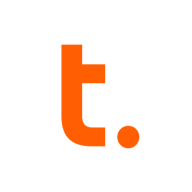

Teradata and dbt are competitors in data management. Teradata holds an advantage in large-scale data warehousing and analytics, while dbt is strong in data transformation due to its streamlined ETL processes.
Features: Teradata includes advanced analytics, scalability, and comprehensive data warehousing solutions focused on high performance. dbt simplifies ETL processes and enhances analytics engineering with efficient transformation tools, emphasizing automated documentation and data accessibility.
Ease of Deployment and Customer Service: Teradata requires complex deployment with extensive infrastructure needs and expert intervention. Teradata offers strong support services for enterprises. dbt being cloud-native, is easier to deploy with online and community support, ideal for agile teams.
Pricing and ROI: Teradata's pricing mirrors its enterprise offerings with higher initial setup costs but benefits in scalability and integration over time. dbt has lower setup costs, rapid transformation functionality, and displays favorable ROI for agile data management.


dbt is a transformational tool that empowers data teams to quickly build trusted data models, providing a shared language for analysts and engineering teams. Its flexibility and robust feature set make it a popular choice for modern data teams seeking efficiency.
Designed to integrate seamlessly with the data warehouse, dbt enables analytics engineers to transform raw data into reliable datasets for analysis. Its SQL-centric approach reduces the learning curve for users familiar with it, allowing powerful transformations and data modeling without needing a custom backend. While widely beneficial, dbt could improve in areas like version management and support for complex transformations out of the box.
What are the most valuable features of dbt?In the finance industry, dbt helps in cleansing and preparing transactional data for analysis, leading to more accurate financial reporting. In e-commerce, it empowers teams to rapidly integrate and analyze customer behavior data, optimizing marketing strategies and improving user experience.
Teradata is a scalable data analytics platform designed to meet enterprise demands for large-scale data management and processing, focusing on performance, scalability, and security for complex query executions.
As a leading data warehousing solution, Teradata integrates advanced analytics enabling organizations to derive insights from massive datasets. It supports high-volume data workloads with its architecture optimized for analytical queries. Users benefit from its robust scalability, allowing seamless expansion as data grows. Teradata's SQL engine is compatible with a wide range of data types, ensuring flexibility in data analysis. With advanced security measures, it protects sensitive data across various environments, providing peace of mind to users handling critical information.
What are the most important features of Teradata?Teradata is widely used in industries like finance, telecommunications, and healthcare, where data-driven decisions are critical. Companies leverage its robust analytics capabilities to enhance customer experiences, streamline operations, and ensure compliance with regulatory requirements. In these sectors, quick access to data insights can significantly impact competitive advantage.
We monitor all Data Integration reviews to prevent fraudulent reviews and keep review quality high. We do not post reviews by company employees or direct competitors. We validate each review for authenticity via cross-reference with LinkedIn, and personal follow-up with the reviewer when necessary.